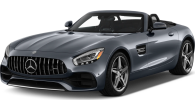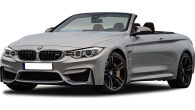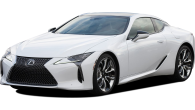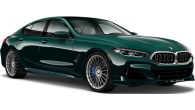It’s getting on for half a century since Porsche introduced its first 911 Turbo. The ‘930’ was a ground-breaking mid-’70s supercar, sticking with the 911’s signature rear-mounted, air-cooled, flat-six cylinder engine driving the rear axle.
And despite several close calls with extinction as the boffins in Zuffenhausen flirted with more conventional configurations in other models, the 911 and its Turbo flagship have endured.
To put the subject of this review, the current 911 Turbo in context, that initial 3.0-litre, single-turbo 930 produced 191kW/329Nm.
Its 2021 Turbo S descendant is powered by a 3.7-litre, twin-turbo, flat-six (now water-cooled but still hanging out the back) sending no less than 478kW/800Nm to all four wheels.
No surprise, it’s performance is staggering, but does it still feel like a 911?
Porsche 911 2021: Turbo S
| Engine Type | Flat 6, 3.7L |
|---|---|
| Fuel Type | Premium Unleaded Petrol |
| Fuel Efficiency | 11.5L/100km (combined) |
| Seating | 4 |
| Price From | $399,960 - $459,690 |
Is there anything interesting about its design?
9 / 10
It’s one of the toughest briefs in automotive design. Take an instantly recognisable sports car icon and evolve it into a new generation. Don’t corrupt its soul, but know it will be faster, safer, and more efficient. It has to be even more desirable than the stunning machines that have gone before it.

Michael Mauer has been head of design at Porsche since 2004, guiding development of all models, including the most recent iterations of the 911. And when you look at the 911 over time, decisions about which elements to retain and which to revise are delicate ones.
Although the current ‘992’ 911 dwarfs Ferdinand ‘Butzi’ Porsche’s mid-’60s original, it couldn’t be mistaken for any other car. And all the signature elements are present, including the elongated headlights faired into prominent front guards, the distinctive profile combining a steeply raked windscreen with the gentle arc of the roofline running down to the tail, and the side window treatment echoing 911s past and present.
The Turbo S dials up the heat with ‘Porsche Active Aerodynamics’ (PAA) including an auto-deploying front spoiler, as well as active cooling air flaps and wing element at the rear.
At no less than 1.9m across the Turbo’s body is 48mm wider than the already substantial 911 Carrera, with additional engine cooling vents at the front of the rear guards adding extra visual intent.
The rear is utterly 2021 but screams 911. If you’ve ever followed a current 911 at night, the single LED keyline-style tail-light makes the car look like a low-flying UFO.

Rims are 20-inch front, 21-inch rear centrelocks, shod with Z-rated Goodyear Eagle F1 rubber (255/35 fr / 315/30 rr), helping to give the 911 Turbo S’s look a subtly menacing undertone. How can a rear-engined car’s stance look this perfect.
Inside, a contemporary take on traditional ingredients maintains the finely-tuned design strategy.
For example, the classic five dial instrument layout under a low arch binnacle will be familiar to any 911 driver, the difference here being the two configurable 7.0-inch TFT displays flanking the central tachometer. They’re able to switch from conventional gauges, to nav maps, car function readouts, and a lot more.

The dash is defined by strong horizontal lines with the central multimedia screen sitting above a broad centre console dividing the slim but brilliant grippy sports seats.
Everything is finished with a typically teutonic, typically Porsche, attention to detail. High quality materials - premium leather, (real) brushed metal, decorative inlays in ‘Carbon matt’ - complete a meticulously focused and ergonomically flawless interior design.
One nagging frustration is the engine’s gradual disappearance from view over successive 911 generations. From flat six jewel in an engine bay showcase, to the current plastic cowl cover incorporating a pair of nondescript exhaust fans in more recent models, obscuring everything. Pity.
How practical is the space inside?
8 / 10
A supercar is typically oil to practicality’s water, but the 911 remains an exception to that generally accepted rule. Its 2+2 seating in all but the stripped out GT models adds hugely to the car’s practicality.
The Turbo S’s carefully scalloped out rear seats are a super tight squeeze for my 183cm (6’0”) frame, but fact is the seats are there, and incredibly handy for those with up to high-school age kids, or facing an urgent need to carry extra passengers (ideally, over a short distance).

There are even two ISOFIX anchors, as well as top tether points in the back for safe installation of baby capsules/child seats.
And when you’re not using the rear seats, the backrests split-fold to deliver a maximum 264L (VDA) of luggage space. Add the 128-litre ‘frunk’ (front trunk/boot) and you can start entertaining thoughts of shifting house with your 911 moving van!
Cabin storage extends to a decent bin between the front seats, incidental space in the centre console, a slimline glove box, and compartments in each door.
There are also clothes hooks on the front seat backrests, and two cupholders (one in the centre console, and another on the passenger side.

Connectivity and power options consist of two USB-A ports in the centre storage box, along with SD and SIM card input slots, plus a 12-volt socket in the passenger footwell.

Does it represent good value for the price? What features does it come with?
8 / 10
Cost-of-entry for the 911 Turbo S Coupe is $473,500, before on-road costs, which towers above high-performance contenders like the Audi’s R8 V10 Performance ($395,000), and BMW’s M8 Competition coupe ($357,900).
But take a detour through a McLaren showroom and the 720S ranges into view at $499,000, which in percentage terms is pretty much a perfect head-to-head match-up.
So, aside from its exotic powertrain and leading-edge safety tech, covered separately further on in the review, the 911 Turbo S is loaded with standard equipment. Everything you’d expect from a bona fide Porsche supercar, with an extra high-tech twist on top.
For example, the headlights are auto ‘LED Matrix’ units, but they feature the ‘Porsche Dynamic Light System Plus’ (PDLS Plus) which allows them to swivel and track with the car through even tight corners.
The ‘Porsche Connect Plus’ multimedia system, managed via a 10.9-inch centre display, includes navigation, Apple CarPlay connectivity, a 4G/LTE (Long Term Evolution) telephone module and Wi-Fi hotspot, as well as a top-shelf infotainment package (plus voice control).
The special addition here is ‘Porsche Car Remote Services’, incorporating everything from the ‘Porsche Connect’ app and streaming with Apple Music, to service scheduling and breakdown assistance.
Over and above that, the standard Bose ‘Surround Sound System’ features no less than 12 speakers (including a centre speaker and subwoofer integrated into the car’s body) and a total output of 570 watts.

Two-tone leather interior trim with contrast stitching (and quilting in the seat centre panels and door cards) is also part of the standard spec, as is a multifunction, leather-trimmed sports steering wheel (with ‘Dark Silver’ shift paddles), a customisable digital instrument cluster with the central tachometer flanked by two 7.0-inch TFT displays, alloy rims (20-inch fr / 21-inch rr), LED DRLs and tail-lights, rain-sensing wipers, dual-zone climate control, and heated adaptive sports front seats (18-way, electrically-adjustable with memory).

There’s a lot more, but you get the idea. And needless to say, the McLaren 720S matches the 911 Turbo S with a massive load of standard fruit. But the Porsche delivers value in this ratified part of the market, and relative to a competitor like the Macca, it boils down to a choice of a rear-engined hero, with an unrivalled back story, that’s very, very fast and capable, or a mid-engine, carbon-rich, dihedral door exotic that’s very, very fast and capable.
What are the key stats for the engine and transmission?
9 / 10
The 911 Turbo S is powered by an all-alloy, 3.7-litre (3745cc) horizontally-opposed six-cylinder engine, featuring direct-injection, ‘VarioCam Plus’ variable valve timing (on the intake side) and twin ‘Variable Turbine Geometry’ (VTG) turbos to produce 478kW at 6750rpm, and 800Nm from 2500-4000rpm.
Porsche has been refining VTG technology since the introduction of the ‘997’ 911 Turbo is 2005, the idea being that at low revs the turbo guide vanes are close to flat to create a small aperture for the exhaust gases to pass through for quick spool up and optimal low-down boost.
Once boost passes a pre-set threshold the guide vanes open (electronically, in around 100 milliseconds) for maximum high-speed pressure, without the need for a bypass valve.
Drive goes to all four wheels via an eight-speed dual-clutch ‘PDK’ automatic transmission, a map controlled multi-plate clutch pack, and the ‘Porsche Traction Management’ (PTM) system.
How much fuel does it consume?
7 / 10
Porsche’s official fuel economy figure for the 911 Turbo S coupe, on the ADR 81/02 - urban, extra-urban cycle, is 11.5L/100km, the 3.7-litre twin-turbo ‘flat’ six emitting 263 g/km of C02 in the process.
Despite the standard stop/start system, over a week of city, suburban, and some spirited B-road running, we averaged 14.4L/100km (at the pump), which is in the ballpark given this car’s performance potential.
Recommended fuel is 98 RON premium unleaded although 95 RON is acceptable at a pinch. Either way, you’ll need 67 litres to fill the tank, which is enough for a range of just over 580km using the factory economy figure, and 465km using our real-world number.
What's it like to drive?
10 / 10
Most people haven’t had the opportunity to strap themselves into a rocket sled and light the wick (respect to John Stapp), but a hard launch in the current 911 Turbo S goes a fair way down that road.
The raw numbers are crazy. Porsche claims the car will blast from 0-100km/h in 2.7 seconds, 0-160km/h in 5.8sec, and 0-200km/h in 8.9sec.
Car&Driver in the US managed to extract 0-60mph in 2.2 seconds. That’s 96.6km/h, and there’s no way this thing would take another half a second to hit the ton, so there’s little doubt it’s even faster than the factory claim.
Engage the launch control system (no need to select Sport+ mode), lean on the brake, squeeze the accelerator to the floor, release the left pedal, and all hell breaks loose in a field of vision-narrowing, chest-compressing blast of pure thrust.
Maximum power of 478kW arrives at 6750rpm, just creeping under the 7200rpm rev ceiling. But the big punch comes from the 800Nm of maximum torque’s arrival at just 2500rpm, remaining available across a broad plateau to 4000rpm.
In-gear acceleration from 80-120km/h is covered in a (literally) breathtaking 1.6sec, and if your private road stretches far enough maximum velocity is 330km/h.
The PDK dual-clutch transmission is a precise instrument, and engaging with it via the wheel-mounted paddles dials up the fun factor even further. Throw in the howling engine noise and rasping exhaust note and it doesn’t get much better.
Suspension is strut front/multi-link rear supported by ‘Porsche Stability Management’ (PSM), ‘Porsche Active Suspension Management’ (PASM), and ‘Porsche Dynamic Chassis Control’ (PDCC).
But despite all this high-tech gee-whizzery, you can feel the Turbo S’s undiluted 911 DNA. It’s communicative, beautifully balanced, and despite weighing in at 1640kg, delightfully nimble.
Steering is an electro-mechanically assisted, variable-ratio, rack and pinion system, delivering brilliant road feel and just the right weight from parking speeds up, with next to no vibration or shudder feeding through to the wheel.

And the brakes are simply mega, comprising immense, Le Mans-grade ventilated and cross-drilled ceramic composite rotors (420mm fr/390mm rr) with 10-piston alloy monobloc fixed calipers at the front, and four-piston units at the rear. Wow!
It all comes together in the corners with the car remaining steady and stable under even heavy braking, the big discs washing off speed without a hint of fuss. Turn in and the car points precisely towards the apex, start squeezing the throttle mid-corner and it lights up the afterburners, putting all its power to the ground, blazing ahead on exit, hungry for the next bend.
In the back of your mind you know ‘Porsche Torque Vectoring Plus’ (PTV Plus), including an electronically regulated rear diff lock with fully variable torque distribution, and the tricky AWD system are helping transform you from fast car wannabe, to corner-carving hero, but it’s still massive fun.
In fact, this is a supercar anyone can drive, Dial the settings down to their most benign levels, relax the brilliant sport seats from snug to comfy, and the 911 Turbo S morphs into an easy every day driver.
Important to call out the spot-on ergonomics providing immediate access to switches, controls, and on-board data. In fact the only negative I can come up with (and it’s not enough to upset the maximum score in this section) is the surprisingly hard steering wheel. A little more give would be welcome.
Warranty & Safety Rating
What safety equipment is fitted? What safety rating?
9 / 10
The current ‘992’ version of the Porsche 911 hasn’t been assessed for safety performance by ANCAP or Euro NCAP, but that doesn’t mean it gives ground in terms of active or passive safety.
You could argue the 911’s dynamic response is its most potent active safety weapon, but a comprehensive suite of sophisticated systems specifically designed to avoid a crash are also on-board.
For example, the car will detect (properly) wet conditions and prompt the driver to select the ‘Wet’ drive setting which lowers actuation thresholds for the ABS, stability and traction controls, adjusts drivetrain calibration (including a reduction in the degree of rear diff locking) increases the percentage of drive sent to the front axle, and even opens the front air vent flaps and raises the rear spoiler to its highest position to optimise stability.
Other support functions include, lane change assist (with turn assist) incorporating blind-spot monitoring, ‘Night Vision Assist’ using an infrared camera and thermal imaging to detect and warn the driver of otherwise unseen people or animals ahead, ‘Park Assist’ (reversing camera with dynamic guidelines), and ‘Active Parking Support’ (self-parking - parallel and perpendicular).
‘Warning and Brake Assist’ (Porsche-speak for AEB) is a four-stage, camera-based system with pedestrian and cyclist detection. First the driver receives a visual and audible warning, then a braking jolt if there’s increasing danger. Driver braking is reinforced up to full pressure if necessary, and if the driver doesn’t react, automatic emergency braking activates.
But if, despite all that, a collision is unavoidable the 911 Turbo S features two-stage airbags for the driver and front passenger, thorax airbags in the side bolsters of each front seat, and head airbags for the driver and front passenger in each door panel.
What does it cost to own? What warranty is offered?
7 / 10
The 911 is covered by Porsche’s three year/unlimited km warranty, with paint covered for the same period, and a 12-year (unlimited km) anti-corrosion warranty also included. Off the mainstream pace, but on par with most other premium performance players (Merc-AMG the exception at five years/unlimited km), and possibly influenced by the number if kays a 911 is likely to travel over time.

‘Porsche Roadside Assist’ provides 24/7/365 coverage for the life of the warranty, and after the warranty runs out is renewed for 12 months every time the vehicle is serviced at an authorised Porsche dealer.
The main service interval is 12 months/15,000km. No capped price servicing is available with final costs determined at the dealer level (in line with variable labour rates by state/territory).
Verdict
Porsche has honed the 911 Turbo formula over six decades, and it shows. The current 992 version is stunningly fast, with superb dynamics, and a level of practicality not expected in an outright supercar. Despite a price tag pushing half a million Aussie dollars it delivers competitive value against the likes of McLaren’s awesome 720S. It’s an amazing machine.
Pricing Guides






























































.jpg)






.jpg)
.jpg)

Comments